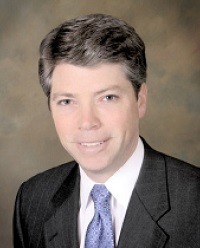Dr. Peter Callandar
 California Pacific Medical Center Offers New Hip Treatment for Active Patients
California Pacific Medical Center Offers New Hip Treatment for Active Patients
Birmingham Hip Resurfacing
At age 45, Buzz was having a hard time getting around because of a burning pain in his leg. Sitting in meetings was challenging, and even more devastating to his quality of life, he had difficulty sleeping. At 6 feet 9 inches tall, Buzz had been a basketball player for the University of California, as well as professional teams. Although he was in good health, the combination of genetics (both grandparents had hip issues) and his active lifestyle resulted in osteoarthritis in his hip at a young age, whic limited his ability to enjoy a very full life.
Buzz visited his orthopedist to discuss his options after reading about a new procedure called Birmingham Hip Resurfacing (BHR). Fewer than 200 surgeons in the U.S. are trained to perform the surgery and three of those physicians are at California Pacific Medical Center’s Comprehensive Joint Care Program. Buzz saw Peter Callander, M.D., an orthopedic surgeon who specializes in hip and knee total joint replacement surgery.
“Buzz was a great candidate for BHR because of his active lifestyle. Dislocation is a risk with full hip replacement patients engaged in physical activity,” according to Dr. Callander. While hip replacement requires the removal of the entire femoral head and neck, hip resurfacing leaves these structures intact.
BHR covers the joint’s damaged surfaces with an implant that more closely resembles a tooth cap than a traditional hip implant. Callander explains, “BHR gives patients a more natural feeling in their hip because the joint and bone are left intact.”
BHR implants match the size of the patient’s natural femoral head (hip ball). They are substantially larger than the femoral head of the traditional total hip replacement implant. This increased size translates into greater stability in the new joint and decreases the chances of dislocation of the implant after surgery.
The surgery went well for Buzz. The hospital staff even ordered Buzz a special bed to fit his 6’9” basketball player frame. “Everyone was really professional and kind at California Pacific. I couldn’t have asked for a better experience,” says Buzz.
BHR was approved by the FDA in May 2007, although it has been used worldwide since 1997. A recent study of the effectiveness of the technique found that 99.5 percent of the 1,626 patients surveyed said they were “pleased” or “extremely pleased” with the results of their BHR surgery.
Buzz couldn’t be happier. “It was three months and a day and I was skiing in Idaho and now I am skiing better than ever before,” he says.
Full recovery varies, but in general patients feel a positive return of function within three to six weeks. Most people can return to work with limited physical activity within two weeks barring any complications. Dr. Callander explains, “Going into surgery, Buzz had a positive attitude which helped in his recovery. He was an excellent patient who followed his doctor’s instructions and physical therapy religiously resulting in great pain-free function.”
Hip resurfacing is ideal for many young, active patients who suffer from hip pain but wish to maintain a more active lifestyle. Patients are known to participate in marathons and other strenuous activities soon after surgery. According to Dr. Callander, “This surgery really can enhance their quality of life.”
